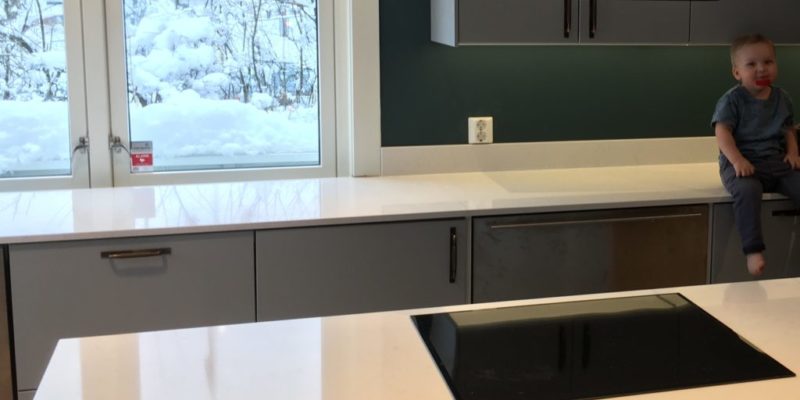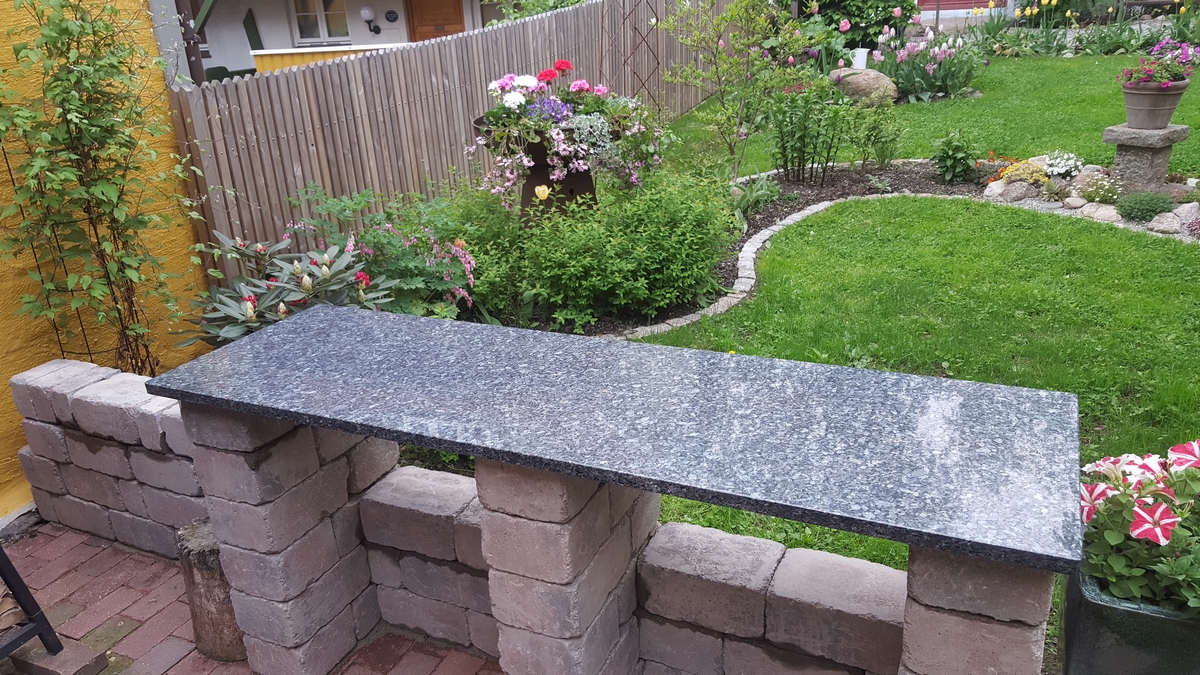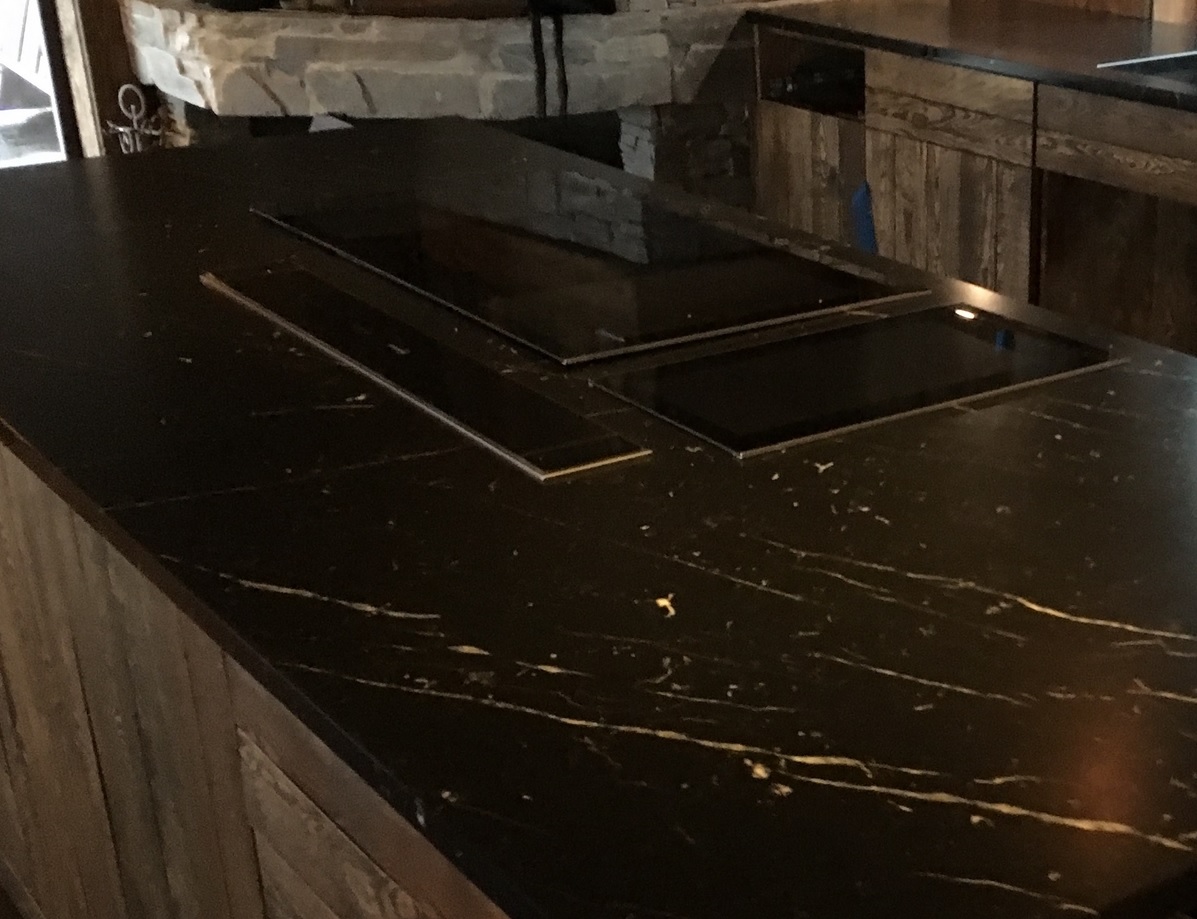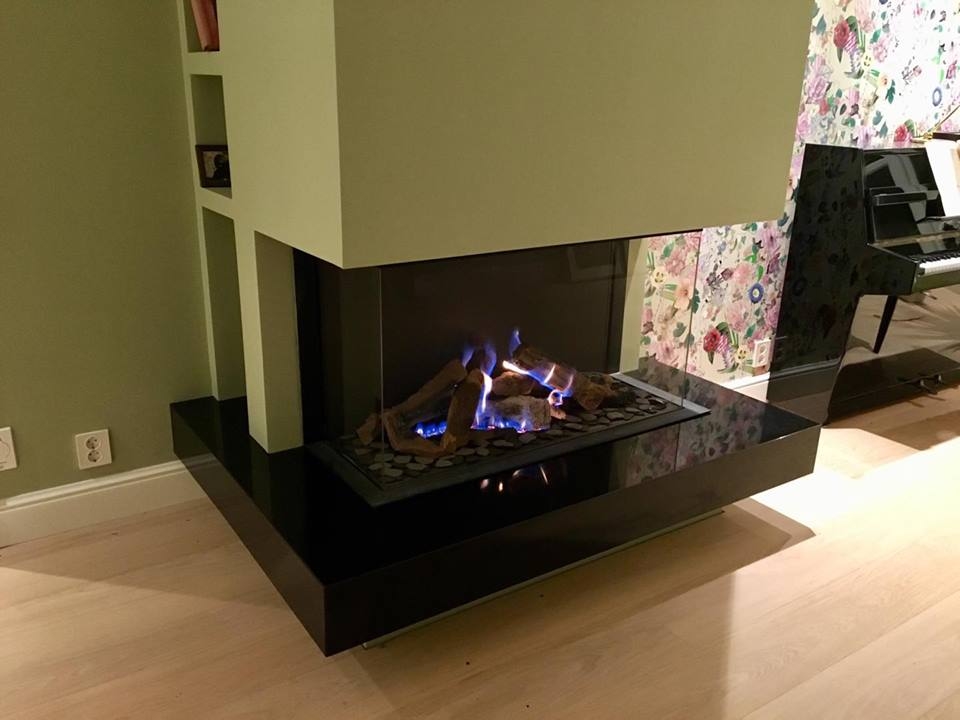
A polished or honed worktop?
With the right care, a stone worktop, its pattern and its beauty, are nearly eternal. However, a lot depends on the surface finish and, from time to time, interested parties are faced with the question: what is the most suitable or practical solution for my kitchen or home?
The shine of granite or quartz that has been polished as smooth as a mirror will certainly beautify each home and in your bathroom or kitchen the luxuriously stylish honed surface of marble will bring out the shine that has charmed people since classical antiquity. The two most popular finishes for stone worktops are polished (P) and honed (H). In terms of appearance the result is quite similar, although the polished stone surface is shiny and reflective, while the honed worktop is matte and the appearance does not depend on the angle of light falling on it. Both are well-suited for use in either the kitchen or bathroom, with the only thing needing to be taken into consideration being that scratches, dust, dried drops of water and fingerprints are clearly visible on a polished surface.
A perfectly smooth surface is also achieved with honing, but in comparison with polishing the process ends prior to the more fine grained tools being used. While a polished worktop is as smooth and shiny as a mirror, then polished stone leaves a bit of a more natural impression, being silky matte. A worktop that has been processed in this way is less demanding when it comes to cleaning the kitchen and is less susceptible to scratches than a polished stone surface.
The brushed (B) method is also often used when it comes to finishing natural stones. This means that the softer part is brushed out of the stone using diamond brushes, which leaves the surface a bit uneven and feeling leathery (which is why it is sometimes referred to as a leather surface) when touched with the hand.
A surface treated in this way is not quite smooth, but, as a rule, is more resistant to stains.
Flaming (F) is a technology during the course of which stone (primarily granite) is heated to high temperatures with an open flame. All silicate minerals contain carbon, with the surface of the stone changing when it is burned. The quartzite surface is brushed and the result is an exciting and highly textured appearance.
| Look for possibilities! |
Of course, there are other options, for example bush-hammering, treatment with a sandblaster or water jet cutter, etc. These methods of finishing are effective in their own way; however, as is the case with burning, it is recommended that the surface be levelled by brushing. The worktop will not be entirely smooth, which is why stone materials treated in this way are more commonly used outdoors or as stair treads, as wall tiles, or to finish grilling corners or outdoor fireplaces.



Spring campaign
What colour worktop should you choose?
Stone worktop – more solutions than you think!
What colour kitchen to choose?
Frequently Asked Questions
Which finishing options are available?
The most popular worktop stone finishes are polished (P) and honed (H); both are smooth, but the polished surface is shiny, when the honed surface is matt. However, many more finishes exist and different manufacturers may have different terms for describing the same result, depending on whether it refers to the type of treatment or the surface after treatment (end result). For example, in case of granite, the term «leathered finish» is sometimes used, while another manufacturer calls this a «brushed» surface. Finishes may depend on the properties of the stone and, of course, not all treatment options are available for all materials. If you need an explanation of terms such as flamed, bush-hammered (fine-picked), antiqued (tumbled), water-jet honed, blasted, acid-washed, or would like to see some samples, please contact our specialists!
To what extent can one trust a sample of a stone and images on a website and social media?
The stone samples originate from the sold stones – the same material the work surface is to be made. Yet, the pattern and colour of a stone greatly depend on the lighting and the angle of view. For example, quartz with a finer structure may in certain conditions appear completely monochromatic, uniformly white, beige, gray or black. Certain varieties of stone with polished and shiny pieces are extremely difficult to photograph naturally, and depending on the shooting angle chosen to avoid light reflection, the same kitchen island may appear either dark gray or night black. Slight differences in colour may occur on the stones also depending on the batch. With natural stones, it is not surprising that the pattern or colour of the stone slab varies, regardless of the fact that the whole kitchen is made not only of one batch, but actually of the same slab. This is especially true for the white marble Bianco Carrara C. When choosing character materials (such as natural stones like Carrara marble or Jura Gray limestone), you can send the contact person a photo of what the stone pattern should be – we then can specify, whether a stone with a similar design can be found. For very specific needs, it may be wiser to use artificial stone with a non-varying pattern.
| Price calculator |
